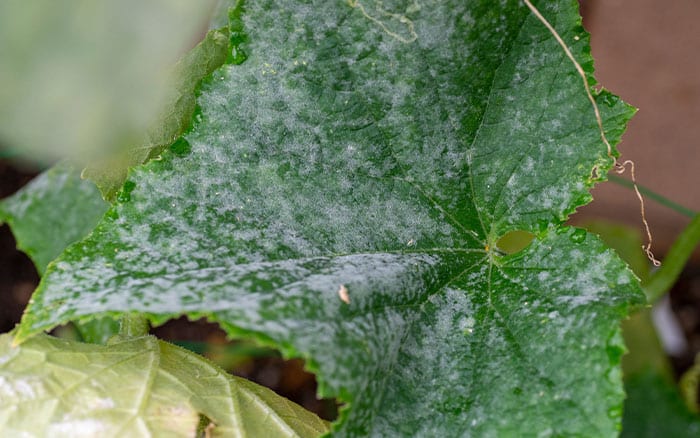Powdery mildew is a fungal disease commonly found on a wide variety of plants that can adversely affect their growth and health.
What is powdery mildew
Firstly, there are several different types of this disease, (Erysiphaceae spp.,) all closely related. And all produce the same powdery effect on the surface of fruit and vegetable leaves. Additionally, the effect is caused by the fungus throwing out thousands of white spores.
How to spot powdery mildew
Powdery mildew is easily identified by the distinctive white powdery coating seen on the surface of vegetable and fruit leaves.
Furthermore, plants affected by the different types of powdery mildew are quite varied and include the following:
- Apples
- Asters
- Brassicas
- Cucumbers
- Gooseberries
- Melons
- Marrows
- Peaches
- Peas
- Plums
- Rhododendrons
- Roses
- Strawberries
- Additionally, many other ornamental plants



How to control powdery mildew
The disease thrives in dry conditions, especially where plants are closely spaced together and air can’t freely circulate. Then, the spores can be spread great distances by windy conditions. But the good news is, that although there are many types of powdery mildew, they don’t spread to unrelated plants.
Firstly, remove infected leaves and branches as soon as seen. Furthermore, do this carefully to avoid spores being shaken onto nearby healthy leaves. Also, do not place removed leaves in the compost heap.
Then, check the area again during the autumn months and remove any sick-looking perennials in that area. Because some spores can overwinter on nearby infected material.
Finally, prevent this disease from occurring by making sure plants are watered regularly and that air can freely flow around them. Then add organic matter to the soil during the autumn months and mulch around growing plants during the spring.


Need advice?
Ultimately, if you need specialist advice, I recommend you get in touch with your local garden centre.

Leave A Comment